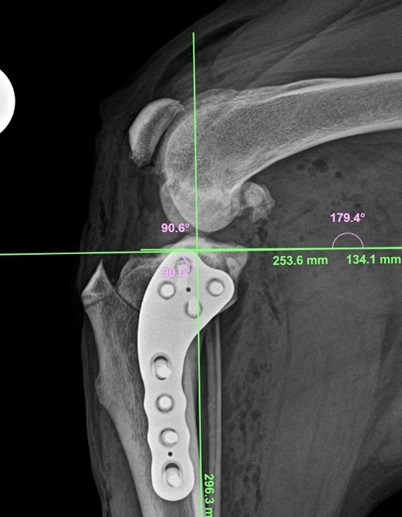
What is Cranial
Cruciate Ligament (CCL) Disease?
Understanding the disease of the Cranial Cruciate Ligament (CCL): The CCL is one of the most important stabilizers of the knee. It prevents hyperextension, limits internal rotation, and prevents the tibia (shin bone) from sliding forward each time the leg bears weight.
When the CCL is damaged, the result is an unstable knee. This instability results in pain and inflammation. Over time, debilitating arthritis develops. Rupture of the cranial cruciate ligament (CCL) of the stifle joint (=knee) is one of the most common orthopedic injury in dogs.
It may happen acutely as the result of a true traumatic injury; however, this is not the norm. Most commonly it happens as a result of slow deterioration of the ligament as a dog ages. Minor trauma (that would not damage a normal ligament) finally causes it to tear completely. This difference between dogs and humans also explains why animals frequently are affected in both knees.
The currently most widely accepted surgical techniques include TPLO, Tibial Tuberosity Advancement (TTA) lateral suture. The latter technique is most commonly performed in small dogs and cats, since the knee joint can be adequately stabilized in these animals. For larger dogs and active dogs we recommend the TPLO-procedure since progression of arthritis is decreased or halted, final limb function is better and animals have an earlier return to function.
Knee - Tibial Plateau Leveling Osteotomy (TPLO)
The TPLO-procedure is based on investigation of the biomechanics of the dog’s knee: In contrast to the human knee, the dog’s knee has a downward slope of the tibia that exacerbates the instability in a knee with a torn CCL. In contrast the human knee does not have this slope. You can compare this to your car standing on a hill or on a flat parking lot. On the parking lot, you won’t need to use the hand-brake, however, on a hill the car would roll without it. The hand brake is resembled by the cruciate ligament in the dog.
The TPLO-procedure flattens the shin bone by rotating it – putting your car from the hill on to the flat parking lot. This makes the hand brake (i.e. the cruciate ligament) obsolete. Hence, the TPLO provides stability to the knee during weightbearing by altering the slope of the tibia without actually replacing the ligament. Flattening of the shin bone is accomplished by making a cut in the bone and rotating the top portion to flatten out the slope. Since every dog’s slope is different we will measure your dog’s slope prior to surgery and calculate the required rotation to stabilize the joint. The bone is then plated in its new position.
The bone plate is needed to temporarily stabilize the fracture that we created during the TPLO until the bone is healed. After complete healing the plate is not needed anymore, however, since it doesn’t cause a problem in most animals it is not usually removed.
The success rate of TPLO surgery is extremely high, with as great as 90 percent of dogs who undergo TPLO surgery returning to normal or almost normal function.

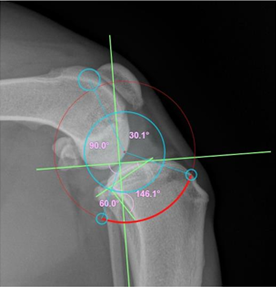
TPA: 30° Before Surgery
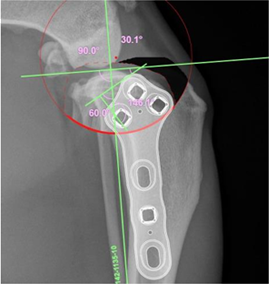
Preoperative planning
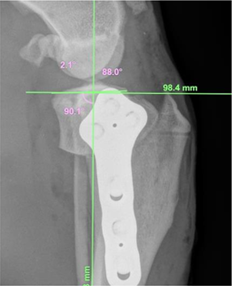
TPA: 2° After Surgery
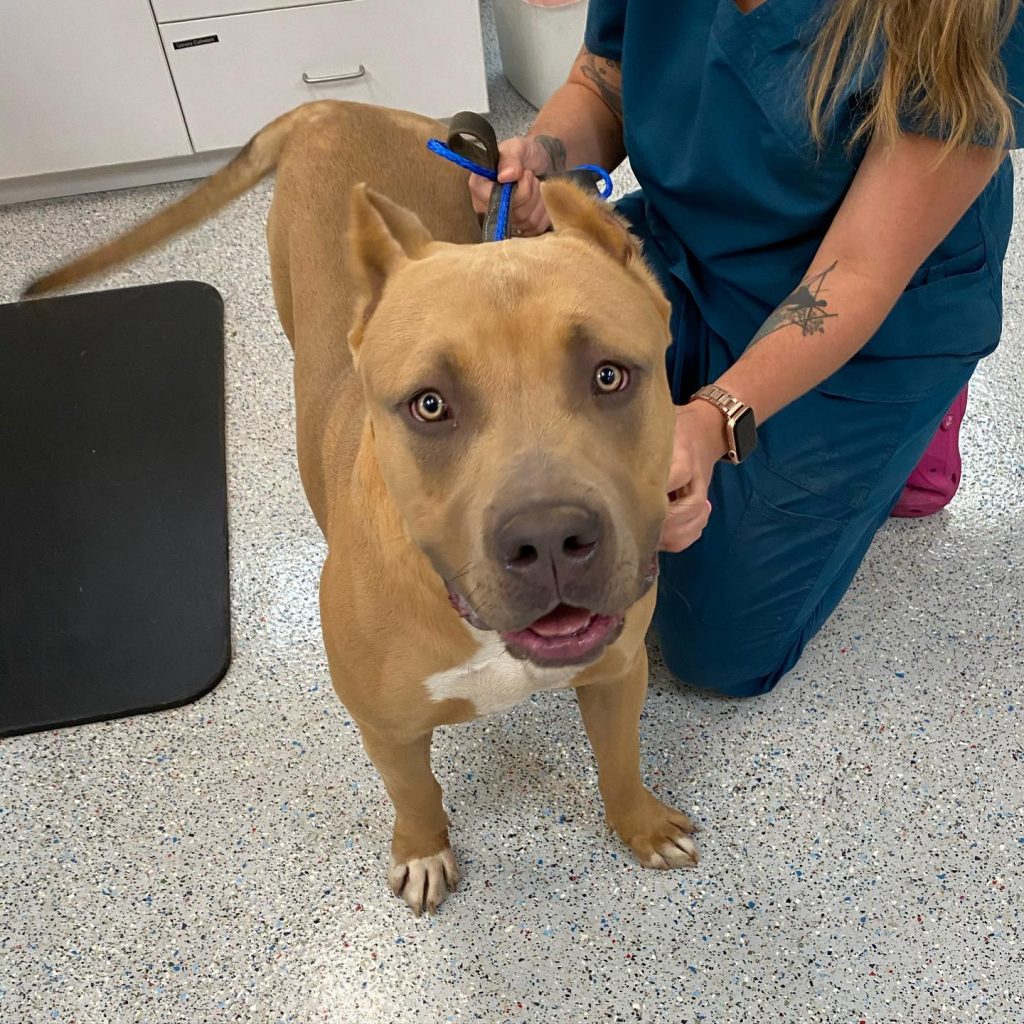
What Results Can I Expect?
Because of the high degree of success, it has become the treatment of choice in large-breed and/or athletic dogs. There are numerous accounts of field trial dogs returning to competition after a successful TPLO surgery. A study, published in the journal Veterinary Surgery in 2005, revealed that dogs that underwent TPLO surgery had less progression of arthritis than those who underwent the extracapsular suture repair technique. Complications associated with the TPLO-procedure are numerous; however, they can be avoided if adequate rehabilitation is performed. Bone plates are not strong enough to resist normal activity, which is why the activity level has to be reduced during bone healing. What to Expect After Surgery When your dog leaves the hospital after surgery, you will be given a set of written instructions to help you with your dog’s recovery. It is extremely important to restrict exercise while your dog is healing. Physical therapy is also an essential part of the recovery process. We are committed to helping you every step of the way, whether by answering your questions or guiding you through the rehabilitation process. We want to help you and your dog experience a successful TPLO recovery.

